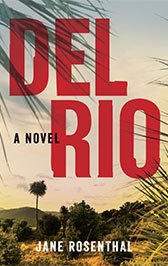Sun-drenched beaches, golden hills, beautiful weather, and a diverse landscape – all things that residents and visitors love about California. However, California is also home to some beautiful and unique types of architecture.
For many architects, California is seen as a place of beauty, inspiring a variety of diverse architectural styles over the years. You can expect to see everything from Mission Revival and Spanish Colonial Revival Styles to Bungalow Courts, Craftsman, and the classic California Ranch House.
The Central Valley of California is no exception when it comes to architectural diversity. The roots of architecture in the Valley are intimately tied to its development as one of the most agriculturally productive regions in the world and to the diverse cultures that have come to call the Central Valley as their home.
Jane's second novel!

A once-thriving Central Valley farm town, is now filled with run-down Dollar Stores, llanterias, carnicerias, and shabby mini-marts that sell one-way bus tickets straight to Tijuana on the Flecha Amarilla line. It’s a place . . .
If you’re visiting the Valley, you’re likely to see homes whose architectural style was strongly influenced by the large populations of Hispanic people working and living in the Central Valley. From small adobe bungalows to large ranchos that sprung up with the rise of the livestock industry, the architecture in the Central Valley has changed over time with the influx of European settlers into the area and increasing development.
Adding to a way of life
Since the mid-1800’s, the architecture of the Central Valley has revolved around its agricultural history. With the construction of irrigation and better infrastructure in the late 19th century and the 20th century, farming, fruit cultivation, and raising livestock made agriculture one of biggest businesses in the state. Architecture was mostly driven by function over form during this period in the Valley’s history.
However, over time, residents began to consider aesthetic quality when building their homes. If you’re visiting Fresno, you can take walking or driving tours of the city’s historic districts. Fresno’s Huntington Boulevard Historic District in the heart of the city is one of its most architecturally distinct neighborhoods. It’s an eclectic mix of architectural styles popular from the early 1900’s through 1960’s, including Craftsman Bungalows and Period Revival homes.
Praise for the writing
Building for the future
Central Valley architect Maria Ogryziak, sees today’s architecture as being “not just about materials and space, but also of people and place. The best architecture is inextricably woven with its landscape, its culture, and its inhabitants.”
In her recently published book, Framing the Valley, Ogrydziak features eight case study houses in the Central Valley of California, a region “whose vivid landscapes and blue skies offer a contrast to the coastal regions of the state.” Included in Ogrydziak’s book are two remodels of California’s classic ranch-style and mid-century modern tract homes.
If moving to the Central Valley is in your future, you’ll find lots of new construction to choose from as well as examples of classic architecture that may just need some TLC.
Check out some period architecture on a trip through the best small towns in the Central Valley.
